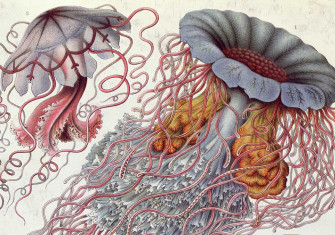Benjamin Banneker’s Broods of Cicadas
Captivated by swarming cicadas, the young son of a freed slave was inspired to become one of the greatest minds of the American Enlightenment.

In the spring of 1749 Benjamin Banneker – the 17-year-old son of a freed slave – thought the world was about to be eaten whole. While working on his family’s farm in Oella, Maryland, he saw ‘thousands of locusts’ suddenly rise up from the ground and ‘creep …up the trees and bushes’, as if directed by some unseen hand. Fearing that they had come to ‘eat and destroy the fruit of the Earth, and would occasion a famine in the land’, he set about killing them as quickly as he could. But he soon realised it was pointless. There were just too many of them. Helpless, he waited with trepidation for the destruction to begin. Yet it never came and within a matter of weeks the ‘locusts’ had vanished without trace.







